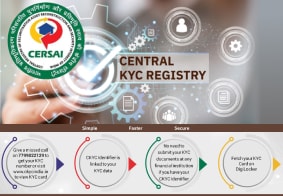CKYC Registry
-
Customer Service Contact us Service request Locate a branch
Find all the help you need
Scan the QR, get our app, and find help on your fingertips

Help CenterSupport topics, Contact us, FAQs and more
-
Login
Are you ready for an upgrade?
Login to the new experience with best features and services
-
Login
Are you ready for an upgrade?
Login to the new experience with best features and services
- Accounts
-
Deposits
IDFC FIRST Bank Deposits
View all Deposits -
Loans
IDFC FIRST Bank Loans
View all Loans - Wealth & Insure
-
Payments
IDFC FIRST Bank Payments
View all Payments -
Cards
IDFC FIRST Bank Cards
View all Cards - Blogs
- Corporate Account
-
Cash Management Services
IDFC FIRST Bank Cash Management Services
View all Cash Management Services - Supply Chain Finance
-
Corporate Lending
IDFC FIRST Bank Lending
View all -
Treasury
IDFC FIRST Bank Treasury
See more details - NBFC Financing
Support topics, Contact us, FAQs and more
- IDFC FIRST Bank Accounts
-
Savings Account
-
Corporate Salary
Account -
Senior Citizens
Savings Account -
First Power
Account -
Current Account
-
NRI Savings
Account -
TASC Institutional
Account -
Savings Account
Interest Calculator
- IDFC FIRST Bank Deposits
-
Fixed Deposit
-
Recurring Deposit
-
NRI Fixed Deposit
-
Safe Deposit Locker
-
FD Calculator
-
RD Calculator
- IDFC FIRST Bank Loans
-
Personal Loan
-
Consumer Durable
Loan -
Home Loan
-
Business Loan
-
Professional Loan
-
Education Loan
-
New Car Loan
-
Pre-owned Car Loan
-
Two Wheeler Loan
-
Pre-owned Two
Wheeler Loan -
Commercial Vehicle
Loan -
Gold Loan
-
Loan Against Property
-
Loan Against Securities
-
Easy Buy EMI card
-
Personal Loan
EMI Calculator -
Education Loan
EMI Calculator -
Home Loan
EMI Calculator
- IDFC FIRST Bank Wealth & Insure
-
FIRST Select
-
FIRST Wealth
-
FIRST Private
-
Mutual Funds
-
Sovereign Gold Bond
-
Demat Account
-
Term Insurance
-
Life Insurance
-
Health Insurance
-
General Insurance
-
Bonds
-
Loan Against
Securities -
Portfolio Management
Service
- IDFC FIRST Bank Payments
-
FASTag
-
Credit Card
Bill Payments -
UPI
-
Funds Transfer
-
Forex Services
-
Pay Loan EMI
- IDFC FIRST Bank Cards
-
Ashva :
Metal Credit Card -
Mayura :
Metal Credit Card -
FIRST Millennia
Credit Card -
FIRST Classic
Credit Card -
FIRST Select
Credit Card -
FIRST Wealth
Credit Card -
FIRST WOW!
Credit Card -
Deals
-
Debit Cards
-
Co-branded Cards
-
Credit Card
EMI Calculator -
FIRST Corporate
Credit Card -
FIRST Purchase
Credit Card -
FIRST Business
Credit Card
- Premium Metal Credit Cards
-
AshvaLifestyle1% Forex₹2,999
-
MayuraLifestyleZero Forex₹5,999
-
FIRST PrivateInvite Only
- Best for travellers
-
MayuraZero ForexMetal₹5,999
-
Ashva1% ForexMetal₹2,999
-
FIRST WOW!Zero ForexTravelLifetime Free
-
FIRST SWYPTravel OffersEMI₹499
-
FIRST Select1.99% ForexLifestyleLifetime Free
-
FIRST Wealth1.5% ForexLifestyleLifetime Free
-
Club VistaraTravelLifestyle₹4,999
-
IndiGo IDFC FIRST Dual Credit CardTravelLifestyle₹4,999
- Max benefits, Free for life
-
FIRST Classic10X RewardsShoppingNever Expiring Rewards
-
FIRST Millennia10X RewardsShoppingNever Expiring Rewards
-
FIRST Select10X RewardsLifestyle1.99% Forex
-
FIRST Wealth10X RewardsLifestyle1.5% Forex
-
FIRST WOW!RewardsTravelZero Forex
-
LIC ClassicRewardsInsuranceShopping
-
LIC SelectRewardsInsuranceShopping
- Reward Multipliers
-
AshvaLifestyleMetal₹2,999
-
MayuraLifestyleZero Forex₹5,999
-
FIRST ClassicNever Expiring RewardsShoppingLifetime Free
-
FIRST MillenniaNever Expiring RewardsShoppingLifetime Free
-
FIRST SelectNever Expiring RewardsLifestyleLifetime Free
-
FIRST WealthNever Expiring RewardsLifestyleLifetime Free
- Rewards & Credit on UPI
-
FIRST Power+FuelUPI₹499
-
FIRST PowerFuelUPI₹199
-
FIRST EA₹NVirtual1% Cashback₹499
-
FIRST DigitalVirtualUPI₹199
-
IndiGo IDFC FIRST Dual Credit CardUPITravelDual cards
- Fuel and Savings
-
FIRST PowerRewardsUPI₹199
-
FIRST Power+RewardsUPI₹499
-
LIC ClassicRewardsInsuranceShopping
-
LIC SelectRewardsInsuranceShopping
- Express and Flaunt
-
AshvaMetal1% Forex₹2,999
-
MayuraMetalZero Forex₹5,999
-
FIRST SWYPEMIOfferMAX₹499
-
FIRST MillenniaRewardsShoppingLifetime Free
- FD Backed rewarding Credit Cards for all
-
FIRST EA₹NVirtualCashback₹499
-
FIRST WOW!Zero ForexTravelLifetime Free
-
CreditPro Balance TransferTransfer & SaveReduce InterestPay Smartly
- IDFC FIRST Bank NRI Forex Solutions
-
Send money to India-Wire transfer
-
Send money to India-Digitally
-
Send money abroad
-
Max Returns FD (INR)
- IDFC FIRST Bank MSME Accounts
-
Platinum Current
Account -
Gold
Current Account -
Silver Plus
Current Account -
Merchant Multiplier
Account -
Agri Multiplier
Account -
TASC Institutional
Account -
Dynamic Current
Account -
World business
Account -
First Startup
Current Account
- IDFC FIRST Bank Business Loans
-
Business Loan
-
Professional Loan
-
Loan Against Property
-
Business Loan for Women
-
Working Capital Loan
-
Construction Equipment Loan
-
Machinery Loan
-
Healthcare Equipment Loan
- IDFC FIRST Bank Business Solutions
-
Payment Solutions
-
Tax Payments
-
Doorstep Banking
-
Point of Sale (POS)
-
Escrow Accounts
-
NACH
-
Payment Gateway
-
UPI
-
Virtual Accounts
-
As per amendment in the Income Tax Rules, PAN or Aadhaar are to be mandatorily quoted for cash deposit or withdrawal aggregating to Rupees twenty lakhs or more in a FY. Please update your PAN or Aadhaar. Kindly reach out to the Bank’s contact center on 1800 10 888 or visit the nearest IDFC FIRST Bank branch for further queries.
-
-
Most Searched
Sorry!
We couldn’t find ‘’ in our website
Here is what you can do :
- Try checking the spelling and search
- Search from below suggestions instead
- Widen your search & try a more generic keyword
Suggested
Get a Credit Card
Enjoy Zero Charges on All Commonly Used Savings Account Services
Open Account Now
The COVID-19 pandemic unexpectedly affected the world. Apart from killing almost 63 lakh and infecting more than 52.8 crore people worldwide (as of 1 June 2022), it impacted the livelihood of many and even forced some into extreme poverty. With 'work from home' and 'lockdown' becoming the new normal, most of us were confined to our homes for nearly two years.
The pandemic also impacted various industries in different ways. Every industry was affected in some way, from banking to insurance to information technology (IT) to the FMCG (Fast-Moving Consumer Goods) segment. As a result, these industries were forced to take various measures to address the impact of COVID-19 and counter the fear among people.
For example, insurance companies started including specialised COVID-19 coverage in their policies, IT companies started offering permanent work-for-home facilities to their employees, and food companies started focusing on creating hygienic, sustainable packaging.
Changes in the banking industry post-pandemic
Like other industries, the banking sector also witnessed several transformations in the last two years. In fact, a few changes have the potential to be more permanent in the banking industry than in any other sector. As people feared the spread of the deadly coronavirus and were forced to stay indoors, they conducted their banking activities through digital means, i.e., their laptops and smartphones.
Internet banking, or digital banking, was already gaining prominence in India during the pre-pandemic era. However, its popularity shot up after the pandemic struck. And now, as we move towards post-pandemic times, it is estimated that this digital revolution could last forever. Most banking customers now prioritise online and mobile banking; very few physically visit a bank branch for banking activities.
Let's see how the COVID-19 pandemic has effected a digital transformation of the banking industry.
Digitalisation of the day-to-day banking activities
Earlier, people used to visit bank branches for their day-to-day banking activities, such as checking account balance, payments, money transfers, applying for a new cheque book, etc. However, in the post-pandemic era, you would hardly see anyone do so. The emergence of mobile banking apps has allowed people to conduct their day-to-day banking activities from the convenience of their homes or office. You can download these apps on your smartphones and use your internet banking ID and password to avail of all digital banking services.
The IDFC FIRST Bank, for instance, offers several services online - with robust cyber security - that provide a seamless banking experience without visiting a branch.
READ MORE
Steep reduction of physical visits to a bank branch
As banking customers prefer to use mobile banking apps for their day-to-day banking activities, their visits to bank branches are limited to the most crucial things. For example, depositing cash of more than a certain amount, physical verification for account opening or loan, etc. However, several banks allow customers to complete the verification process through videoconferencing, further reducing the need for physical visits to bank branches.
Transformation of bank branches into 'service lounges'
The appearance of bank branches is also changing slowly in the post-pandemic era. They are now less about tellers managing daily transactions and more about bank employees guiding the customers to conduct their transactions through their smartphones. Banking spaces or branches are slowly developing into casual seating spaces where you can converse with bank representatives. One could say that the bank branches have now become a place where you get customer service rather than complete financial transactions.
The emergence of third-party banking apps
The emergence of third-party banking apps – or fintech apps – has been one of the cover stories of the pandemic. As most people preferred to stay indoors to protect themselves from the virus, they started trusting these fintech apps for their day-to-day financial transactions. Through such apps, you can check your savings account balance, invest in shares and mutual funds, transfer money to others, recharge your phone/D2H, etc. These apps also allow you to make payments to vendors, reducing your dependence on cash transactions. Even after the pandemic is seemingly over, there are no signs of a decline in the usage of fintech apps.
How has the banking industry reacted to these changes?
As the adoption of digital banking grew during and after the pandemic, the banking industry has taken this shift in customer behaviour with very positive intent. The COVID-19 pandemic made it clear that mobile banking or internet banking will be the future, and most banks have either taken or started taking adequate steps to promote it with a renewed focus.
Here are some of the measures taken by the banks to support this shift,
The launch of online banking
Although the concept of online banking or internet banking is not new to Indians, it gained prominence only after demonetisation and, subsequently, the pandemic. Several small banks that did not provide internet banking facilities earlier have now started offering them. Almost all banks today have launched their mobile banking applications.
Redefining customer experience
Providing customers with a rich online banking experience has become a top priority for banks. They are trying to put customers and their requirements at the forefront while developing their mobile banking apps. For example, IDFC FIRST Bank's mobile app is designed with a very simple user interface to ensure an effortless customer experience.
Promoting a mobile-first approach
Most banking customers today rely on their smartphones to complete financial transactions. This has prompted banks to take the mobile-first approach while preparing their online banking platforms. Their websites and apps are made to be mobile-friendly as well.
Heavy investment in cybersecurity
As most banking customers have started preferring online banking, the risk of cyber threats has also increased. Even a small glitch can result in huge financial losses. That is why banks have started investing heavily in cybersecurity to boost confidence among their customers.
Conclusion
Although the digitalisation of banking services started long ago, it gained prominence only during the pandemic. And in the post-pandemic era, it is evolving into a trend.
If you are on the fence, now is the time to adopt the trend. There are various benefits of online and mobile banking, and the biggest of them is that you can complete your financial transactions from the comfort of your home or office.
With IDFC FIRST Bank's mobile banking app, you can instantly add funds to your account, invest in mutual funds, pay your utility bills, download account statements, and much more.
Disclaimer
The contents of this article/infographic/picture/video are meant solely for information purposes. The contents are generic in nature and for informational purposes only. It is not a substitute for specific advice in your own circumstances. The information is subject to updation, completion, revision, verification and amendment and the same may change materially. The information is not intended for distribution or use by any person in any jurisdiction where such distribution or use would be contrary to law or regulation or would subject IDFC FIRST Bank or its affiliates to any licensing or registration requirements. IDFC FIRST Bank shall not be responsible for any direct/indirect loss or liability incurred by the reader for taking any financial decisions based on the contents and information mentioned. Please consult your financial advisor before making any financial decision.
The features, benefits and offers mentioned in the article are applicable as on the day of publication of this blog and is subject to change without notice. The contents herein are also subject to other product specific terms and conditions and any third party terms and conditions, as applicable. Please refer our website www.idfcfirstbank.com for latest updates.























